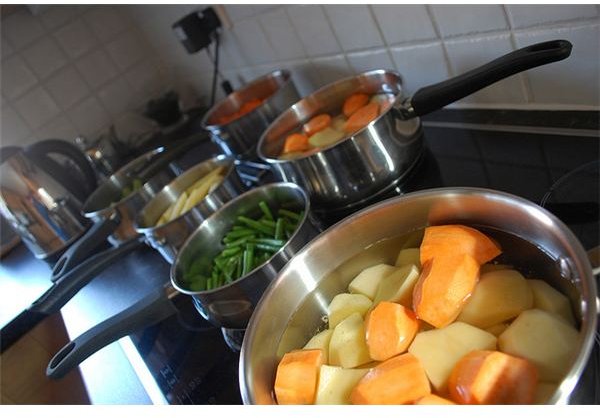Carrot Nutrition Facts: High in Vitamin A & a Cancer Fighting Food
The Humble Carrot
As an easy to prepare vegetable, with a taste that appeals to almost all, the carrot is a popular vegetable in many households. In fact, the carrot has been around since at least the 3rd century and was enjoyed by the ancient Romans. As a member of the Umbelliferae family of vegetables, it has much in common with parsnips, fennel, and dill. Much like these vegetables and herbs, the carrot does most of its growing in the ground (being a root vegetable), with only the very top of the carrot visible, as well as the nutritious green carrot top foliage.
Nutritional Values of the Carrot
As well as being one of the lowest calorie foods you can eat, the carrot is beneficial to more than your waistline. While a single cup serving of raw carrot contains only 30 calories, it also contains a massive amount of carotenoids, which equates to 686 percent of your recommended daily amount of vitamin A. The beta-carotene in foods is converted to vitamin A by the body’s liver.
High carotenoid intake has been linked with a 20 percent decrease in postmenopausal breast cancer and up to a 50 percent decrease in other cancers such as that of the bladder, cervix, prostate, esophagus, larynx, and colon. Eating a single carrot a day could cut the rate of lung cancer in half, making it a true cancer fighting food.
Diets high in carotenoids are also associated with a reduced risk of heart disease. A study in Massachusetts showed that elderly people given a single serving of carrots or nutritious squash each day showed a 60 percent reduction in their risk of heart attack compared to those who ate less than one serving.
Vitamin A is also beneficial in providing protection against a degeneration of eyesight.
Not only is the humble carrot an excellent source of vitamin A, it is also a very good source of:
- Vitamin K - this helps blood to clot properly. Women deficient in vitamin K have been shown to suffer from heavy menstrual bleeding
- Vitamin C - an antioxidant needed for tissue growth and repair, as well as being an immune-boosting nutrient.
- Dietary Fiber - regulates blood glucose, reduces cholesterol levels, prevents the risk of colon cancer.
- Potassium - assists in maintaining heart functions, and regulates blood pressure.
A carrot’s nutrition portfolio is further improved by being a good source of vitamin B1, B3, B6, manganese, molybdenum, phosphorous, magnesium and folate - all that nutrition in just one cup of carrots!
Keep the Carrot Nutrients Locked In
We should bear in mind that although the carrot has wonderful nutritional benefits, the fact is that if it is not cooked properly a lot of

these nutrients will be impaired or totally destroyed. This fact is demonstrated by research conducted by the University of California that showed 85-95 percent of a carrot’s vitamin C content is destroyed during the canning process, which is more proof that fresh is best.
The best way to cook carrots to lock in as many of those wonderful nutrients as possible is to boil them. A report in The Journal of Agriculture and Food Chemistry (Jan 2008) came to the conclusion that this was true, as boiling increased a carrot’s level of carotenoids, although it decreased its levels of polyphenols. In fact, this study said boiling carrots was a better alternative than steaming, and even better than eating carrots raw.
The study by the University of California also showed the cooking process actually helps to break down the thick walls of plants, thus releasing the nutrients for the body to use.
Taking these carrot nutrition facts into account, it is still important not to overcook your vegetables. Cooking your carrots in two inches of water (so they are just covered), and boiling them for 10-12 minutes until tender, should provide a good balance between taste, texture, and nutrition.
Resources & Image Credits
https://whfoods.org/genpage.php?tname=foodspice&dbid=21
https://www.ag.ohio-state.edu/~news/files/0chowcarrots.pdf
